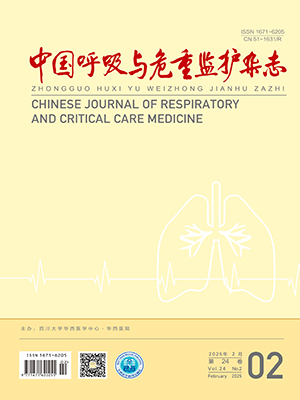| 1. |
Adeloye D, Song P, Zhu Y, et al. Global, regional, and national prevalence of, and risk factors for, chronic obstructive pulmonary disease (COPD) in 2019: a systematic review and modelling analysis. Lancet Respir Med, 2022, 10(5): 447-458.
|
| 2. |
Fujii W, Kapellos TS, Baßler K, et al. Alveolar macrophage transcriptomic profiling in COPD shows major lipid metabolism changes. ERJ Open Res, 2021, 7(3): 00915-2020.
|
| 3. |
Pruenster M, Vogl T, Roth J, et al. S100A8/A9: From basic science to clinical application. Pharmacol Ther, 2016, 167: 120-131.
|
| 4. |
Johnstone KF, Wei YP, Bittner-Eddy PD, et al. Calprotectin (S100A8/A9) is an innate immune effector in experimental periodontitis. Infect Immun, 2021, 89(10): e0012221.
|
| 5. |
Hiroshima Y, Hsu K, Tedla N, et al. S100A8/A9 and S100A9 reduce acute lung injury. Immunol Cell Biol, 2017, 95(5): 461-472.
|
| 6. |
郜洪宇, 孟焕新, 侯建霞. S100A8/A9蛋白与牙周炎症性疾病关系的研究进展. 中华口腔医学杂志, 2020, 55(9): 679-684.
|
| 7. |
Sreejit G, Latif AA, Murphy AJ, et al. Emerging roles of neutrophil-borne S100A8/A9 in cardiovascular inflammation. Pharmacol Res, 2020, 161: 105212.
|
| 8. |
陈小菊, 冷长燕, 刘琴, 等. 钙结合蛋白S100A8/A9在慢性阻塞性肺疾病大鼠中的作用及机制研究. 中国呼吸与危重监护杂志, 2021, 20(12): 837-841.
|
| 9. |
陈延伟, 艾文, 李一禄, 等. 1-磷酸鞘氨醇在慢性阻塞性肺疾病大鼠肺部炎症作用的研究. 武汉大学学报(医学版), 2015, 36(1): 11-14.
|
| 10. |
陈小菊, 周智, 冷长燕, 等. 钙结合蛋白S100A8、S100A9在大鼠肺泡巨噬细胞中的表达及作用. 国际呼吸杂志, 2019, 39(8): 561-566.
|
| 11. |
李晓丹, 王强. 补肺颗粒通过调控 Akt通路对慢阻肺大鼠肺组织自噬和凋亡的影响. 武汉大学学报(医学版), 2020, 41(6): 904-910, 916.
|
| 12. |
杨玲玲, 石广军. 依达拉奉对慢性阻塞性肺疾病模型大鼠的干预作用. 临床肺科杂志, 2020, 25(7): 1076-1081.
|
| 13. |
Averill MM, Kerkhoff C, Bornfeldt KE. S100A8 and S100A9 in cardiovascular biology and disease. Arterioscler Thromb Vasc Biol, 2012, 32(2): 223-229.
|
| 14. |
Sprenkeler EGG, Zandstra J, van Kleef ND, et al. S100A8/A9 is a marker for the release of neutrophil extracellular traps and induces neutrophil activation. Cells, 2022, 11(2): 236.
|
| 15. |
Uspenskaya YA, Komleva YK, Pozhilenkova EA, et al. Ligands of RAGE-proteins: role in intercellular communication and pathogenesis of inflammation. Vestn Ross Akad Med Nauk, 2015, 70(6): 694-703.
|
| 16. |
Fontaine M, Planel S, Peronnet E, et al. S100A8/A9 mRNA induction in an ex vivo model of endotoxin tolerance: roles of IL-10 and IFNγ. PLoS One, 2014, 9: e100909.
|
| 17. |
Joly P, Marshall JC, Tessier PA, et al. S100A8/A9 and sRAGE kinetic after polytrauma; an explorative observational study. Scand J Trauma Resusc Emerg Med, 2017, 25(1): 114.
|




